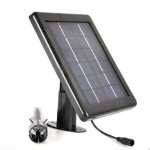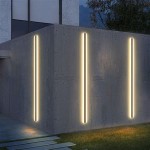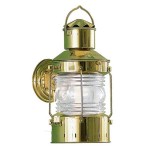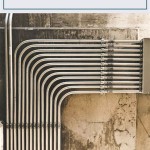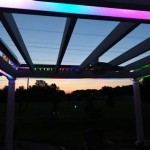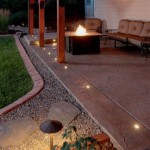How To Replace Outdoor Light Fixture On Brick
Replacing an outdoor light fixture on brick can enhance a home's curb appeal, improve security, and increase energy efficiency, particularly when upgrading to LED technology. While this project may seem daunting, it is a manageable task for homeowners with basic electrical knowledge and the right tools. This article provides a comprehensive guide to safely and effectively replacing an outdoor light fixture mounted on brick.
### Key Point 1: Safety Precautions and PreparationPrioritizing safety is paramount when working with electricity. Before beginning any work, it is imperative to disconnect the power supply to the light fixture at the circuit breaker. Locate the breaker that controls the outdoor lights and switch it to the OFF position. To ensure the circuit is de-energized, use a non-contact voltage tester to verify that no electricity is flowing to the light fixture. This step is crucial to prevent electrical shock.
Gather the necessary tools and materials. Essential tools include a screwdriver set (including both flathead and Phillips head screwdrivers), wire stripper/crimper, electrical tape, wire connectors (wire nuts), a drill with masonry bits, a hammer, safety glasses, work gloves, and a ladder appropriate for the height of the fixture. Materials needed are the new light fixture, mounting hardware compatible with brick, weatherproof caulk, and replacement wire if the existing wire is damaged or insufficient.
Carefully inspect the existing light fixture and its mounting. Observe how it is attached to the brick and note the type of mounting hardware used. This information will be helpful when installing the new fixture. Take photographs of the wiring connections before disconnecting anything. These photos serve as a valuable reference when reconnecting the wires in the new fixture.
Remove the old light fixture. Begin by unscrewing the fixture from the mounting plate or bracket. If the fixture is sealed with caulk, use a utility knife to carefully cut through the caulk line. Gently pull the fixture away from the wall, exposing the wiring connections. Disconnect the wires one at a time, using the wire stripper/crimper to disconnect the wire nuts. Once the wires are disconnected, carefully remove the old fixture and set it aside.
Inspect the wiring. Check for any signs of damage, such as frayed insulation or corroded wires. If the wiring is damaged, replace it with new electrical wire of the same gauge. Ensure the new wire is long enough to reach the connection points in the new fixture with some slack.
### Key Point 2: Installing the Mounting Hardware on BrickInstalling the mounting hardware securely on brick is crucial for the stability and longevity of the new light fixture. Determine the appropriate mounting method based on the weight of the fixture and the condition of the brick.
If the existing mounting holes are in good condition and align with the mounting plate of the new fixture, reuse them. Clean the holes of any debris with a wire brush. Insert appropriate anchors into the holes. Options include plastic anchors, lead anchors, or expanding anchors, depending on the size and weight of the fixture. Tap the anchors gently into place with a hammer until they are flush with the brick surface.
If new mounting holes are required, carefully mark the locations on the brick. Use a drill with a masonry bit to drill pilot holes at the marked locations. Select a masonry bit size recommended for the specific type of anchor being used. Drill straight into the brick, ensuring the holes are deep enough to accommodate the anchors. Avoid applying excessive pressure, which can crack the brick.
Once the pilot holes are drilled, insert the anchors into the holes. Tap them gently into place with a hammer until they are flush with the brick surface. Attach the mounting plate or bracket of the new fixture to the brick using screws designed for use with the chosen anchors. Tighten the screws securely, but avoid over-tightening, which can damage the anchors or crack the brick.
Ensure the mounting plate is level before proceeding. Use a level to verify that the plate is aligned correctly. Make any necessary adjustments before tightening the screws completely. A level mounting plate will ensure that the new light fixture hangs straight.
Apply a bead of weatherproof caulk around the perimeter of the mounting plate where it meets the brick. This will create a seal that prevents water from entering the electrical box, which can cause corrosion and electrical hazards. Smooth the caulk line with a finger or a damp cloth for a neat and professional finish.
### Key Point 3: Wiring and Securing the New Light FixtureConnecting the wiring correctly is essential for the proper functioning and safety of the new light fixture. Refer to the wiring diagram provided with the new fixture and the photographs taken of the old fixture's wiring.
Connect the wires using wire connectors (wire nuts). Typically, the black wire (hot) from the electrical box connects to the black wire from the fixture. The white wire (neutral) from the electrical box connects to the white wire from the fixture. The green or bare copper wire (ground) from the electrical box connects to the ground wire from the fixture or to a grounding screw on the mounting plate.
Twist the wires together tightly using the wire stripper/crimper. Place a wire nut over the twisted wires and twist it clockwise until it is securely tightened. Gently tug on each wire to ensure the connection is solid. If a wire pulls out, re-twist the wires and tighten the wire nut more securely.
Carefully tuck the wires into the electrical box behind the mounting plate. Ensure that the wires are not pinched or strained. Arrange the wires neatly to allow sufficient space for the fixture to be mounted flush against the wall.
Mount the new light fixture onto the mounting plate or bracket. Align the fixture with the mounting holes and secure it with the provided screws. Tighten the screws securely, but avoid over-tightening, which can damage the fixture or the mounting plate.
Install the light bulb and any decorative elements, such as a glass globe or shade. Ensure the light bulb is of the correct wattage and type for the fixture. Follow the manufacturer's instructions for installing any additional components.
Apply a bead of weatherproof caulk around the perimeter of the fixture where it meets the brick. This will further seal the fixture and prevent water from entering the electrical box. Smooth the caulk line for a neat and professional finish.
Restore power to the circuit at the circuit breaker. Switch the breaker to the ON position. Test the new light fixture by turning it on. If the fixture does not work, double-check the wiring connections and ensure the light bulb is properly installed. If problems persist, consult a qualified electrician.
Observe the new light fixture for a few days to ensure it is functioning properly and that there are no water leaks. Check for any signs of damage or loose connections. Make any necessary adjustments to ensure the fixture is securely mounted and properly sealed.
Dispose of the old light fixture and any packaging materials responsibly. Recycle any recyclable materials. Safely discard any hazardous materials, such as fluorescent light bulbs, according to local regulations.

Mounting Exterior Light Through Brick Wall
Installing Outdoor Light Into Brick Diy Home Improvement Forum

How To Remove And Disconnect An Exterior Light Fixture

Mounting Exterior Light Through Brick Wall

How To Install An Outdoor Light Fixture Des And Sses

Outdoor Light Fixture Repair Tips And How Tos Life S Dirty Clean Easy

How To Remove A Porch Light Cover Change The Bulb Hunker

Adding A Sconce On Brick Wall Including How To Cut The

How To Replace A Tombstone In Light Fixture Homesteady Outside Fixtures Outdoor Porch

How To Install Outside Lights Outdoor Light Wiring
Related Posts

